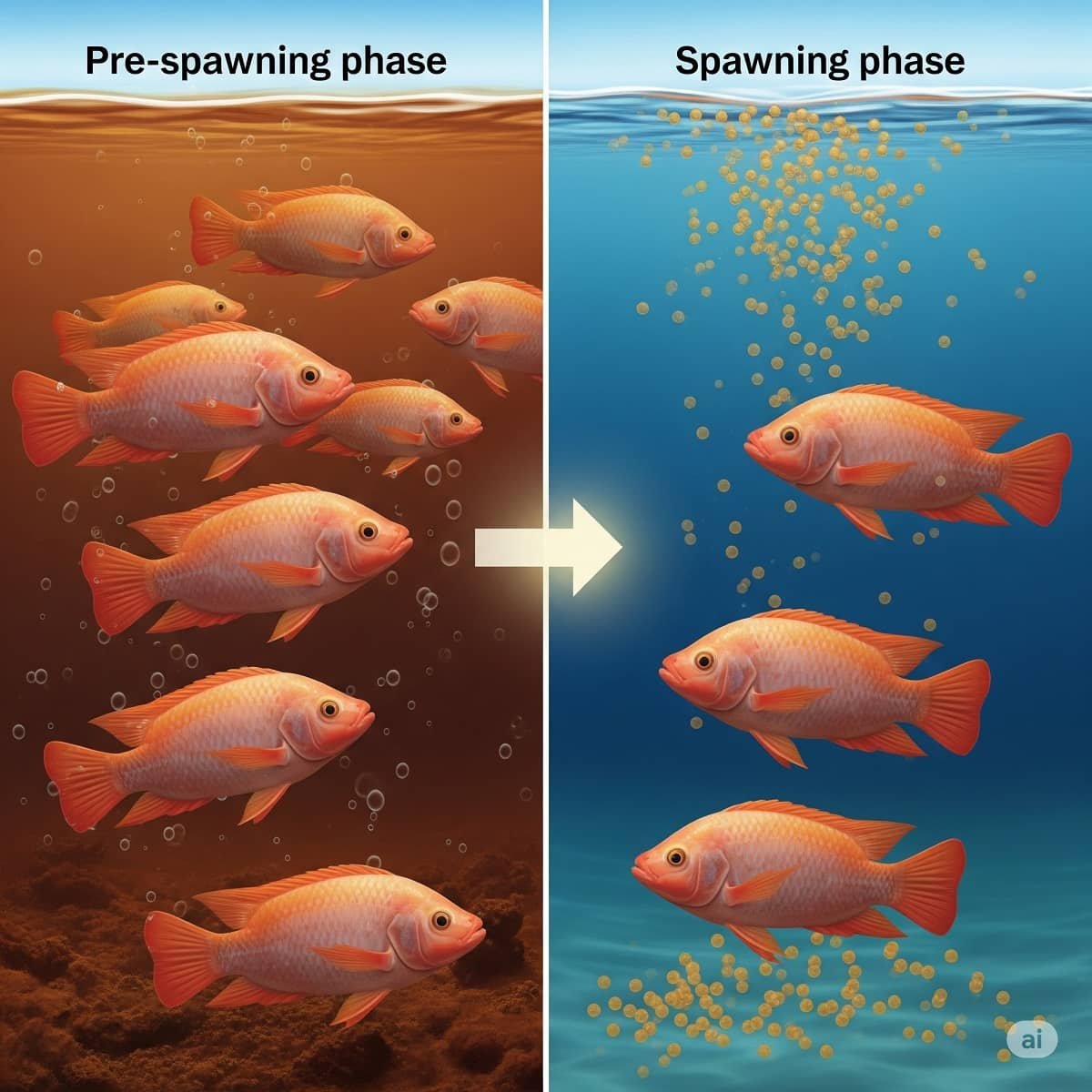
A recent study by researchers from Al-Azhar University (Egypt), the National Institute of Oceanography and Fisheries (NIOF), King Saud University (Saudi Arabia), the University of Galway (Ireland), and Cairo University (Egypt) explored a groundbreaking approach: using nanoparticles derived from the blue-green algae Arthrospira platensis as a dietary supplement for Nile tilapia broodstock.
The researchers evaluated the impact of dietary supplementation with nanoparticles (AN) from the blue-green algae Arthrospira platensis NIOF17/003 on growth performance, whole-body biochemical compositions, blood biochemistry, steroid hormones, and fry production efficiency of Nile tilapia (Oreochromis niloticus) broodstock during the spawning season.
Functional Feeding: A Strategic Approach
Aquaculture research is exploring innovative solutions, including functional feeds containing health promoters and immune stimulants. These can help:
- Reduce disease outbreaks: Functional feed additives can combat disease-causing bacteria.
- Improve feed and water quality: Certain additives enhance nutrient utilization and water conditions.
- Enhance fish performance and health: Functional feeds can promote growth, immunity, and overall health of fish.
Spirulina: A Powerful Microalga
Spirulina, a blue-green alga, is a nutritional powerhouse with a wide range of applications:
- High bioactive content: It boasts exceptional levels of proteins, essential fatty acids, vitamins, and minerals.
- Human health benefits: Spirulina is commonly used in dietary supplements and cosmetics for humans.
- Applications in aquaculture: Spirulina has been shown to improve growth, immunity, and reproductive performance in various fish and shrimp species.
Nanotechnology: A New Frontier in Feed Additives
Nanoparticles offer exciting possibilities for enhancing feed efficiency and nutrient utilization. This study investigates the use of nanoparticles from Arthrospira platensis (AN) as a functional feed additive for Nile tilapia broodstock.
Fish fed diets containing the highest level of AN (6 g kg-1) showed significant improvements in several key areas:
- Increased growth: These fish experienced higher weight gain, final weight, and feed efficiency compared to the control group.
- Improved health: Blood analyses revealed better blood sugar control and liver function in fish fed AN-supplemented diets.
- Enhanced broodstock health: Females fed the highest AN diet showed higher fat content, which could affect egg quality.
Hormonal Harmony for Increased Fry Production
The study also revealed a fascinating impact on hormone levels. Fish fed AN diets showed a gradual increase in crucial reproductive hormones such as luteinizing hormone (LH) and follicle-stimulating hormone (FSH). This hormonal boost translated into a significant increase in fry production efficiency, with the highest AN concentration group experiencing a remarkable 32.2% increase compared to the control.
Benefits for Tilapia Aquaculture
The study’s results suggest that nanoparticles from Arthrospira platensis have immense potential for the tilapia aquaculture industry. By promoting healthy growth, enhancing broodstock health, and significantly increasing fry production, AN supplementation offers a sustainable and efficient approach to fish farming.
Stay Always Informed
Join our communities to instantly receive the most important news, reports, and analysis from the aquaculture industry.
Conclusion
“Inclusion levels of 6 g kg─1 of A. platensis nanoparticles in the diet of Nile tilapia broodstock significantly improved growth performance (FW, WG, FCR, PER, and FER), steroid hormone levels (FSH, LH, free testosterone, total testosterone, progesterone, and prolactin), and increased fry production efficiency by 32.2%, respectively,” the researchers conclude.
While this research is promising, more studies are needed to fully understand the long-term effects of AN on fish health and the environment. Additionally, exploring optimal AN concentrations for different fish species can maximize the benefits of this innovative technique.
Contact
Mohamed Ashour
National Institute of Oceanography and Fisheries (NIOF)
Cairo, Egypt
Email: microalgae_egypt@yahoo.com
Simon J. Davies
Carna Research Station, Ryan Institute, Aquaculture Nutrition Research Unit ANRU, College of Science and Engineering, University of Galway
Galway, Ireland
Email: sjdaquafeed@gmail.com
Reference (open access)
Mabrouk, M. M., Ashour, M., Younis, E. M., Abdel-Warith, W. A., Bauomi, M. A., Toutou, M. M., A. Mansour, A. I., Abdelaty, B. S., Elokaby, M. A., Davies, S. J., El-Haroun, E., & A. Gwida, A. G. (2024). Arthrospira platensis nanoparticles dietary supplementation improves growth performance, steroid hormone balance, and reproductive productivity of Nile tilapia (Oreochromis niloticus) broodstock. PLOS ONE, 19(6), e0299480. https://doi.org/10.1371/journal.pone.0299480
Editor at the digital magazine AquaHoy. He holds a degree in Aquaculture Biology from the National University of Santa (UNS) and a Master’s degree in Science and Innovation Management from the Polytechnic University of Valencia, with postgraduate diplomas in Business Innovation and Innovation Management. He possesses extensive experience in the aquaculture and fisheries sector, having led the Fisheries Innovation Unit of the National Program for Innovation in Fisheries and Aquaculture (PNIPA). He has served as a senior consultant in technology watch, an innovation project formulator and advisor, and a lecturer at UNS. He is a member of the Peruvian College of Biologists and was recognized by the World Aquaculture Society (WAS) in 2016 for his contribution to aquaculture.




